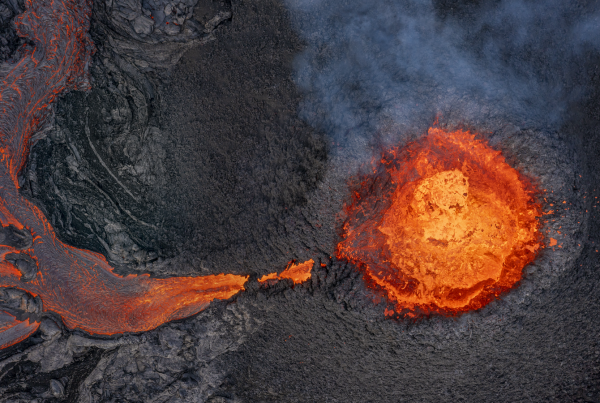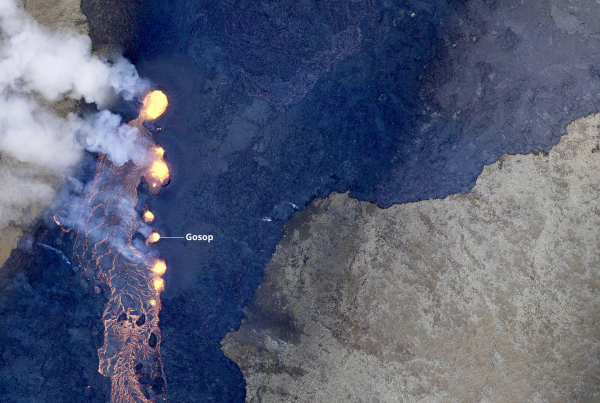
The craters at Fagradalsfjall. Photo by Ragnar Th.
By Ari Trausti Guðmundsson
The Reykjanes Peninsula is a young section of Iceland. It is a land-born, highly active counterpart of the Mid-Atlantic Ridge where two tectonic plates diverge at an average rate of 2.0 centimetres per year. The effect on land is illustrated by a footbridge across an open bedrock fissure, about five kilometres distance from the Reykjanes lighthouse.
The Reykjanes Peninsula has an area of about 2,000 sq. kilometres. It contains various Ice Age volcanic tuff and pillow lava formations as fells and serrated mountains from the last glacial periods. There are also widespread basaltic lava flows and volcanic structures, including craters, from the last ice-free period that started about 11,500 years ago.
Four elongated volcanic systems and fissure swarms line the peninsula from SW to NE. They contain open fissures, normal faults, high-temperature geothermal fields and numerous volcanic fissures. These are lined with various, monogenetic craters. Many small and large lava shields are found in the area. Eruptions have occurred in the three westernmost systems during the past millennium, forming a series of eruptions in the tenth and eleventh centuries, in 1151-1188 and 1210-1240.
All four volcanic systems have been active for thousands of years and are closely monitored, including the one east of Keflavik International Airport, the Reykjanes Volcanic System. There, the historical series of eruptions started as a productive ash eruption in the sea close to the Reykjanes lighthouse and continued inland in two main sets of magma producing fissures with lava and ash craters. Periodic eruptions lasted for about three decades. Each of the lava flows typically cover 20-30 square kilometres and can be accessed around the Blue lagoon or the Reykjanes Geothermal Power Plant.
The eruption series prior to the one in the Reykjanes Volcanic System occurred in the adjacent volcanic system to the east, the Trölladyngja Volcanic System. During the initial lava eruption in 1151, the lava flow surrounded a medieval farm at the south coast, the ruins of which can still be seen.
As of 19. March 2021, a new series of volcanic eruptions may have started with the Geldingadalir/Fagrdalsfjall eruption that lasted for 6 months. This event may herald a long period of unrest in all four volcanic systems of the Reykjanes peninsula with an unforeseen impact on the communities in SW-Iceland.



